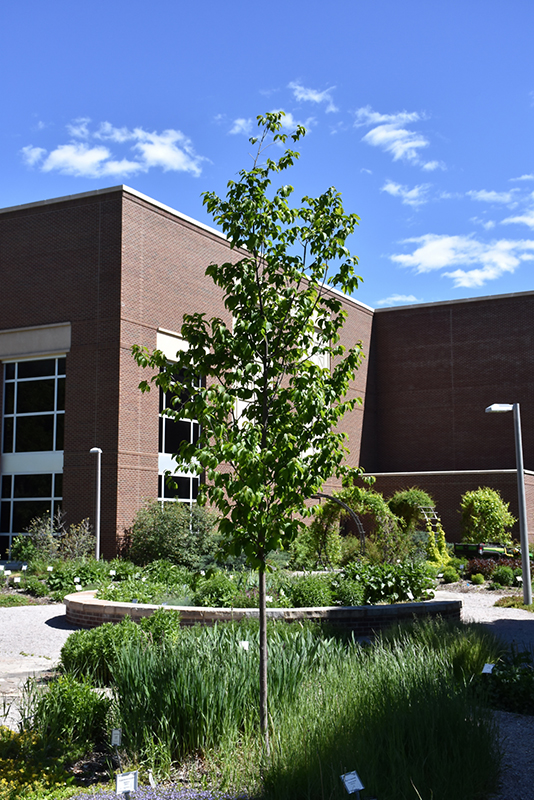Gertens Plant Finder
Autumn Treasure® Hop Hornbeam
Ostrya virginiana 'JFS-KW5'
Height: 40 feet
Spread: 20 feet
Sunlight:
![]()
![]()
Hardiness Zone: 4a
Other Names: Hophornbeam, Ironwood
Brand: J. Frank Schmidt & Son Co.
Description:
An excellent cultivar well suited to urban living with its predictably upright, narrow form that is perfect for street planting; exceptionally strong wood; attractive hop-like papery chains in late summer and fall; fall leaf drop is clean and complete
Ornamental Features
Autumn Treasure® Hop Hornbeam has dark green deciduous foliage on a tree with an oval habit of growth. The serrated pointy leaves turn outstanding shades of yellow and in the fall. It produces small clusters of tan hop-like fruit from late summer to mid fall.
Landscape Attributes
Autumn Treasure® Hop Hornbeam is an open deciduous tree with a strong central leader and a shapely oval form. Its relatively fine texture sets it apart from other landscape plants with less refined foliage.
This is a relatively low maintenance tree, and is best pruned in late winter once the threat of extreme cold has passed. It is a good choice for attracting birds and squirrels to your yard, but is not particularly attractive to deer who tend to leave it alone in favor of tastier treats. It has no significant negative characteristics.
Autumn Treasure® Hop Hornbeam is recommended for the following landscape applications;
- Accent
- Shade
- Windbreaks and Shelterbelts
Planting & Growing
Autumn Treasure® Hop Hornbeam will grow to be about 40 feet tall at maturity, with a spread of 20 feet. It has a high canopy with a typical clearance of 7 feet from the ground, and should not be planted underneath power lines. As it matures, the lower branches of this tree can be strategically removed to create a high enough canopy to support unobstructed human traffic underneath. It grows at a slow rate, and under ideal conditions can be expected to live for 70 years or more.
This tree does best in full sun to partial shade. It is very adaptable to both dry and moist locations, and should do just fine under average home landscape conditions. This plant will benefit from an application of bonemeal and/or mycorrhizal fertilizer at the time of planting. It is not particular as to soil type or pH. It is highly tolerant of urban pollution and will even thrive in inner city environments, and will benefit from being planted in a relatively sheltered location. This is a selection of a native North American species.

